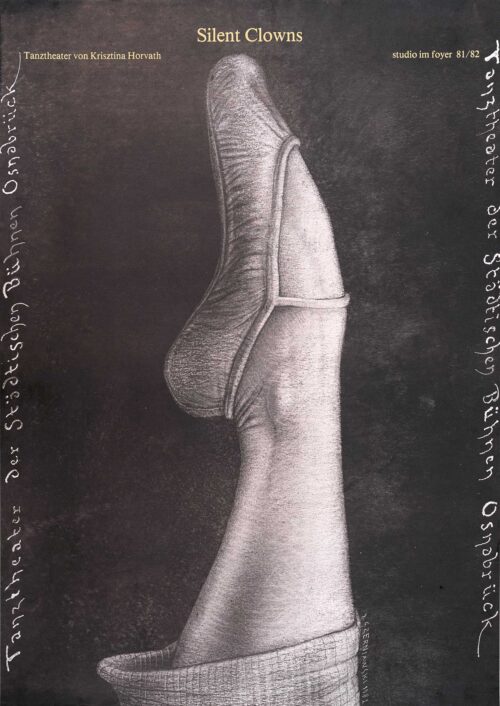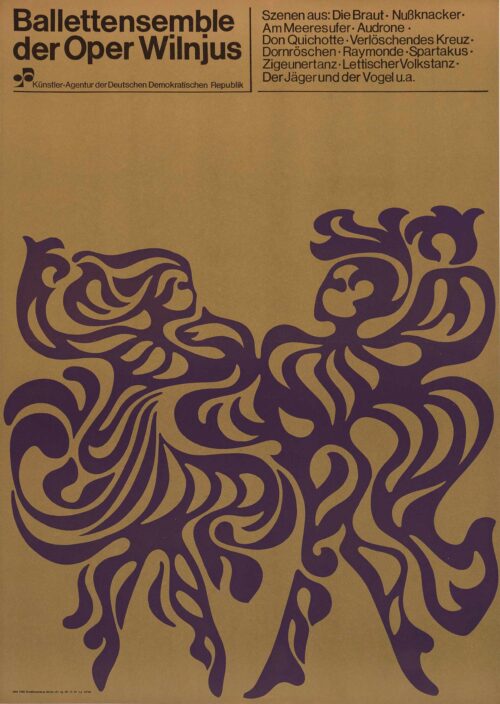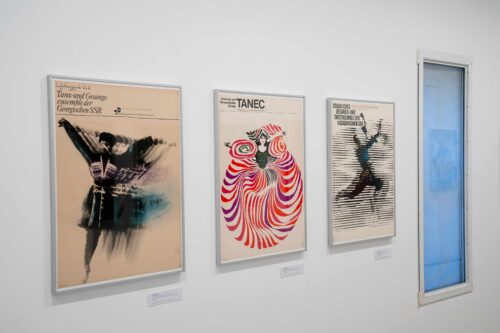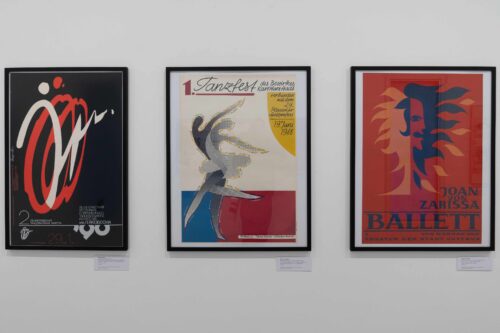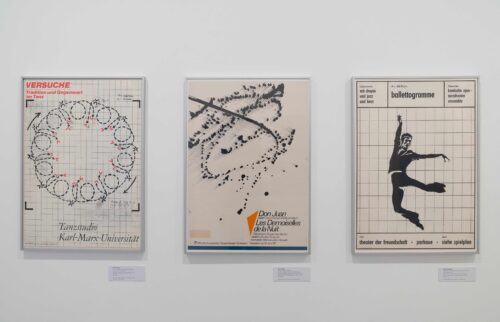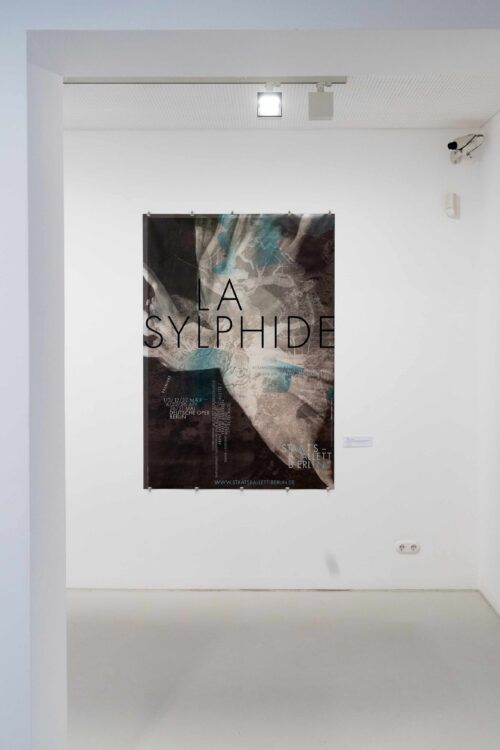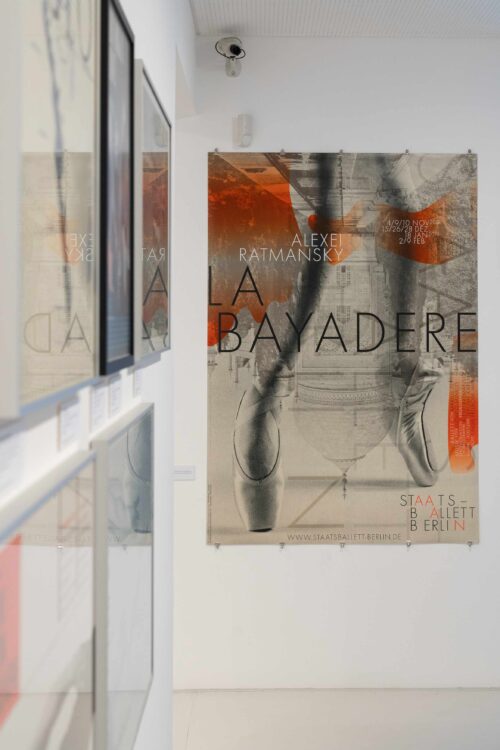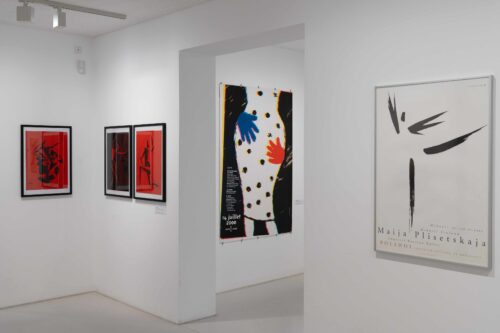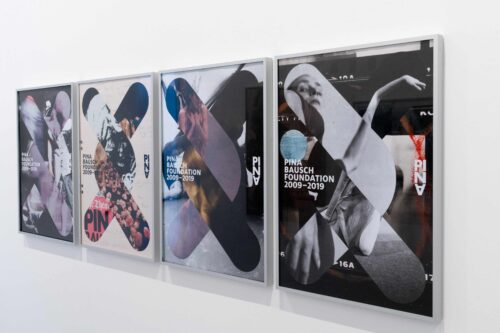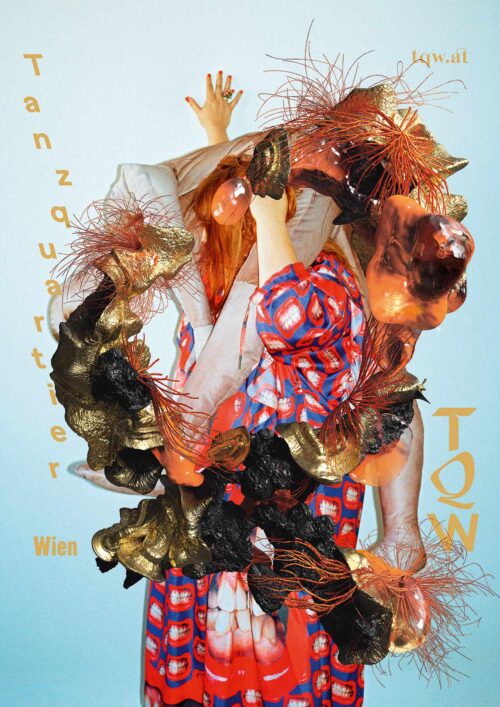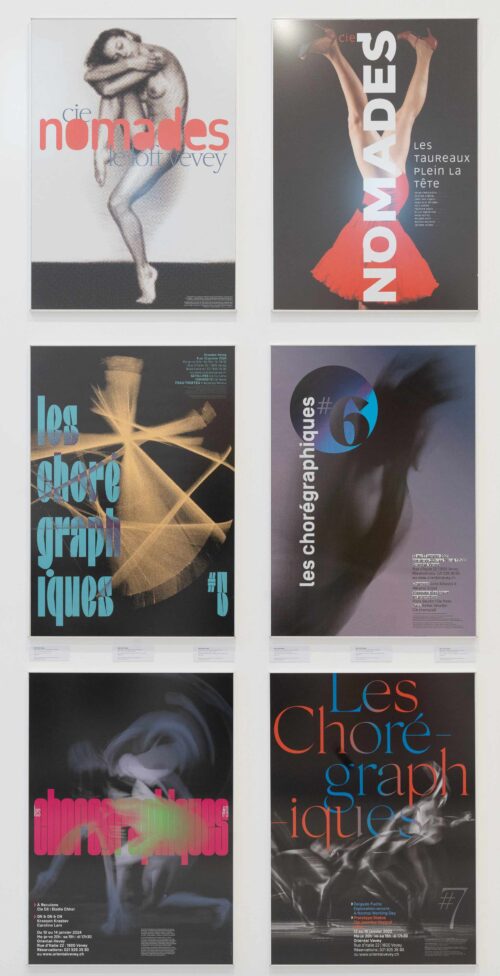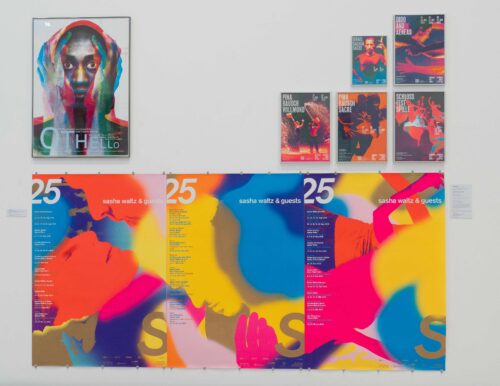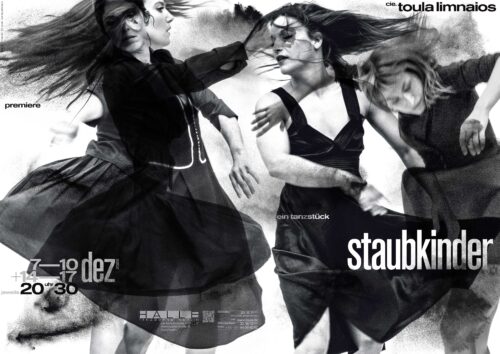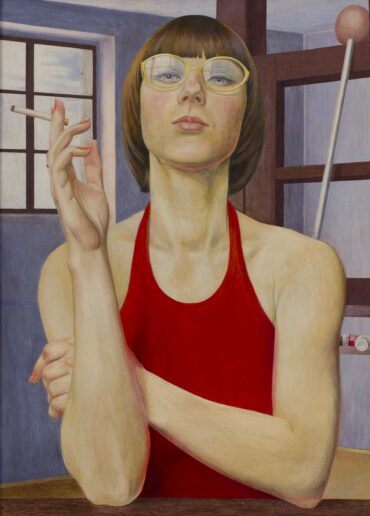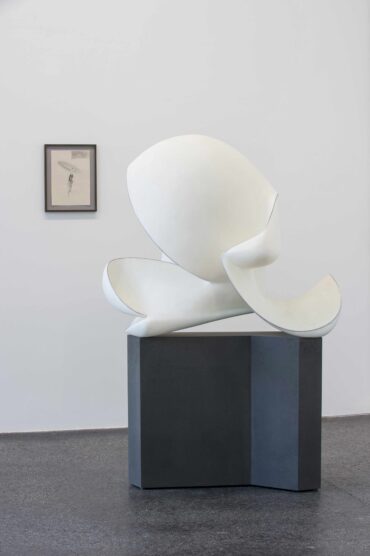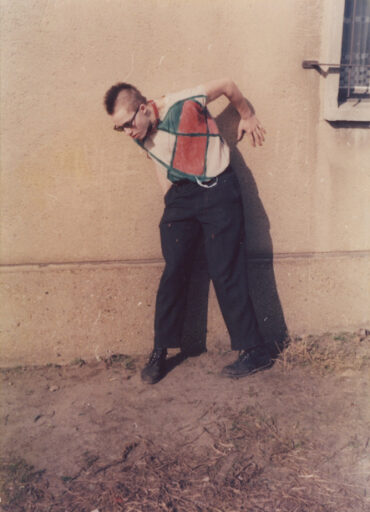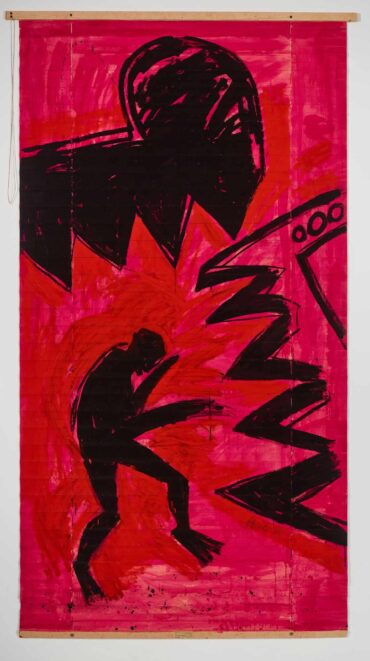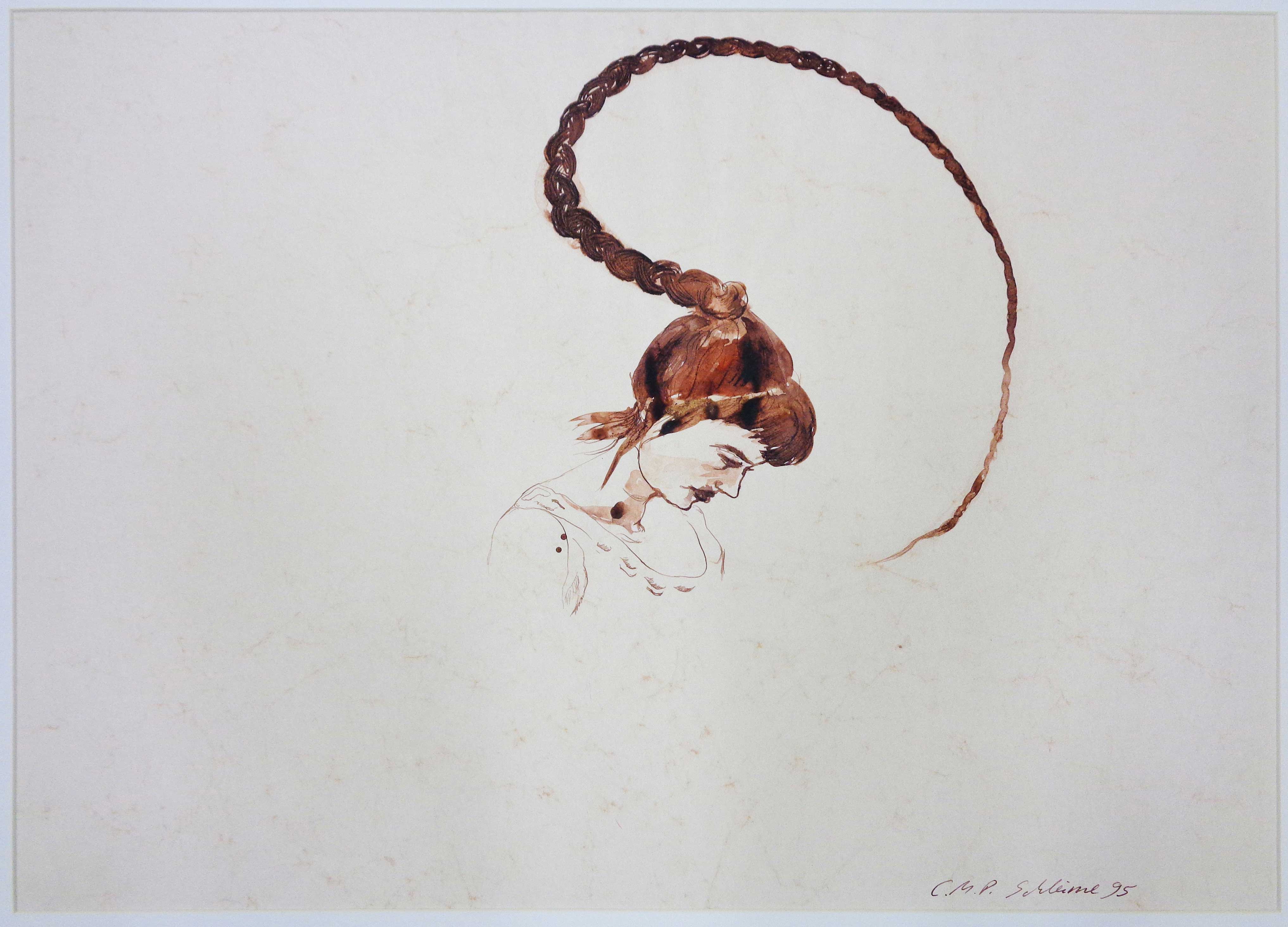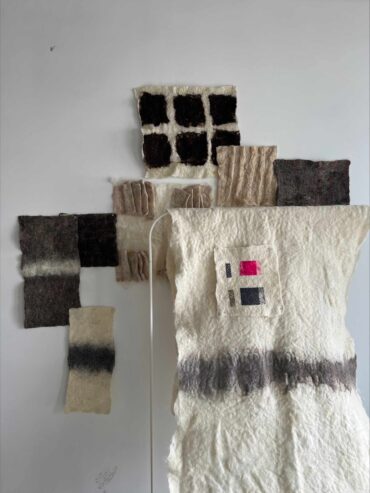
Bewegte Blätter Tanz im Plakat
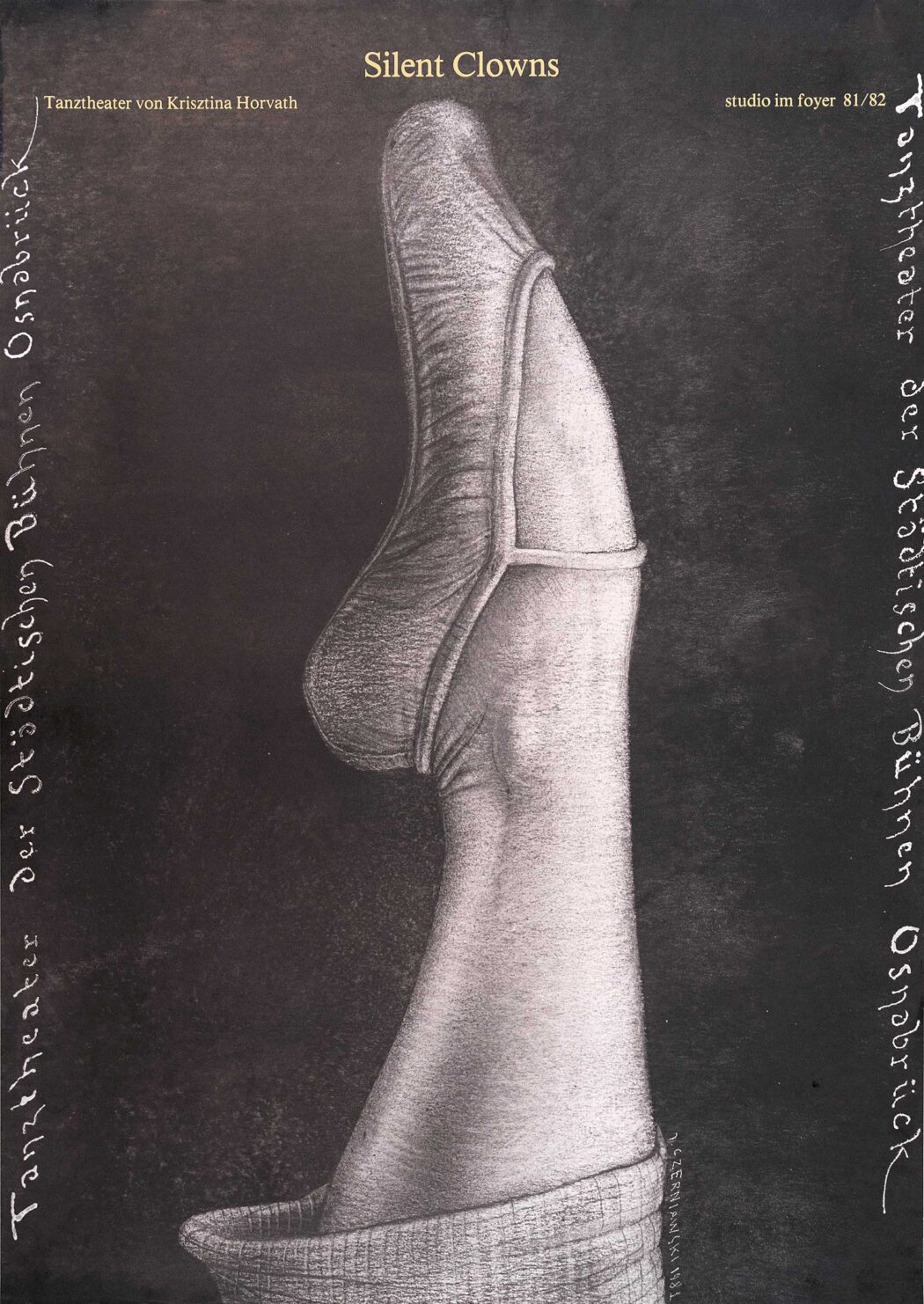
Jerzy Czerniawski, Silent Clowns – Tanztheater von Krisztina Horvath, Städtische Bühnen Osnabrück, 1981, Offsetdruck
© Jerzy Czerniawski, Foto: Bernd Schönberger
Anna Berkenbusch, Walter Ernst Böhm, Günter Karl Bose, Reinhart Braun, Erich Brechbühl, Feliks Büttner, Gerhard Bunke, Elżbieta Chojna, cyan, Jerzy Czerniawski, Jo Fabian, Detlef Fiedler, Bernd Frank, grappa design, Juozas Galkus, Karl Domenic Geissbühler, Steff Geissbühler, Frieder Grindler, Uwe Häntsch, Heinz Handschick, Jürgen Haufe, Hartmut Henning, Fons Hickmann, Hans-Georg Hoppe, Oliver Iserloh, Dietrich Kaufmann, Kathrin Kegler, Günther Kieser, Jelena Kitajeva, Werner Klemke, Andreas Klose, Otto Kummert, Burckhard Labowski, Pablo Lavalley, Holger Matthies, Maximage, Pierre Mendell & Klaus Oberer, milchhof:atelier, Jutta Mirtschin, Hermann Misersky, Adeline Mollard, Maria Mucha-Ihnatowicz, Rolf Felix Müller, Frank Neubauer, Francisco Nieva, Minoru Niijima, Nous Travaillons Ensemble, Claudia Oelert, Andrej Panfilow, Manfred Paul, Čestmír Pechr, Volker Pfüller, Kari Piippo, rosalie, Katrin Schek, Peter Scholl Design, W. Schtschapow, Hajo Schüler, Uwe Sinnecker, Stefan Stefanescu, studio VIE, Waldemar Świerzy, Anusch Thielbeer, Juliane Umbreit, Eva-Maria Viebeg, Andreas Wallat, Ekkehard Walter, Daniel Wiesmann, Ute Zscharnt
Tanz ist in seiner jahrhundertelangen Geschichte und ungeachtet seiner mitunter nationalen Spielarten in der allgemeinsten Definition das urmenschliche Bedürfnis, sich zu Musik zu bewegen, in geordneten Bewegungen des Körpers in Raum und Zeit. Ob dieser im europäisch-amerikanischen Kulturkreis entweder als Volks-, Gesellschafts- oder Schautanz charakterisiert wird, ob die tänzerische Darbietung also vor einem Publikum stattfindet oder nur dem selbstgenügsamen geselligen Vergnügen dient, ist ebenfalls für die Funktionsweise des zweidimensionalen Plakates zentral – denn auch dieses wird entworfen, um gesehen zu werden. 1996 formulierte der Grafiker Almir Mavignier zudem: „Ein Bild sollte man sitzend betrachten, bei der Wahrnehmung eines Plakats hingegen bewegt man sich.“
Sind also Plakate durch ihre meist tänzerisch-bewegte Rezeption besonders prädestiniert als Aufzeichnungs- wie auch als Werbemedium jeder flüchtigen Tanzveranstaltung? Welche Bewegungsnotationen oder Motivkürzel des Tänzerischen gelangen auf die Plakatfläche, wenn sie als Lockstoff für Veranstaltungen des klassischen Balletts, des Tanztheaters und des zeitgenössischen Tanzes dienen?
…
In its centuries-long history and regardless of its sometimes national variations, dance is, in its most general definition, the primal human need to move to music, in orderly movements of the body in space and time. Whether this is characterized in the European-American cultural sphere as either folk, social or show dance, i.e. whether the dance performance takes place in front of an audience or is just for self-satisfied social enjoyment, is also central to the functionality of the two-dimensional poster – because it is also designed to be seen. In 1996, the graphic artist Almir Mavignier also stated: „You should look at a picture while sitting down, but when you perceive a poster you move.“
So are posters, because they are usually received in a dance-like manner, particularly predestined as a recording and advertising medium for any fleeting dance event? Which movement notations or motif abbreviations of dance make it onto the poster surface when they serve as an attractant for events of classical ballet, dance theatre and contemporary dance?
The thematic exhibition brings together posters from the 1960s to the present day, mostly from German-speaking countries and occasionally interspersed with international poster art from Poland, Finland, Russia and France. It draws on the holdings of the museum’s own poster art collection, which is supplemented by some award-winning positions in German-language poster design.
Tipp
Mit Herz und Verstand
Dreiteiliger Ballettabend mit Choreografien von Mauro Bigonzetti und Cayetano Soto
Temperament und mediterrane Leidenschaft bringen die Kreationen von Mauro Bigonzetti und Cayetano Soto auf die Bühne.
PREMIERE
Sa 8.3.25 | 19:30 Uhr
Staatstheater Cottbus
